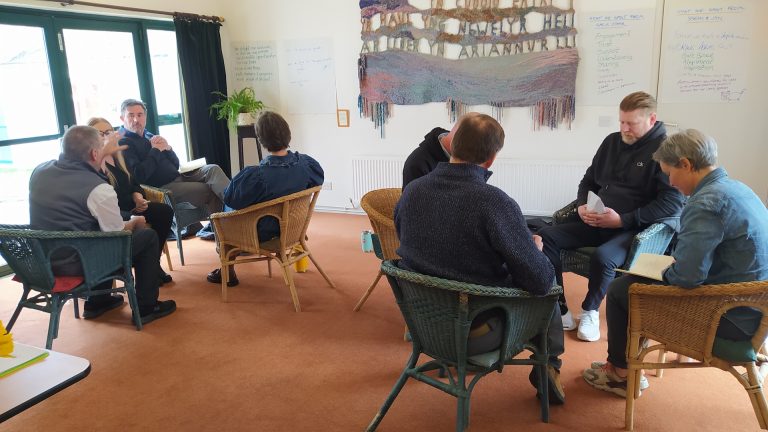Think about a time someone had an emotional outburst. They might have walked out of the room, raised their voice or thumped the table in frustration. The reaction happens in an instant, but its impact can last a lot longer. If it was you who threw your toys out of the pram, you might know that awful feeling of “I’m never coming back from this.” On reflection, you might consider turning down the heat next time a similar energy arises in you.
Or, you might have had a strong reaction inside. You caved in and didn’t say what you really wanted to say. Rather than having the real conversation, you gave in to keep the peace. The regret gnaws away at you and affects your very being. Resentment festers and issues remain unresolved.
Or maybe you know a manager (or maybe you are that manager) who avoids having a difficult conversation altogether? Operating in splendid isolation might bring short-term relief – not having to deal with the mess of hurt feelings – but in the longer-term performance falls, mistakes happen, and relationships fall apart.
If you can see yourself in any of the above three scenarios, you’re not alone. A 2015 study of global leaders found that 70-80% of leaders operate in a ‘reactive’ mode where the focus is on ‘quick wins’ rather than long-term success. Add in demanding clients, a stroppy CEO or an aggressive competitor, little wonder that many leaders are consumed by firefighting, problem solving and thinking quickly.
When it comes to talking together, emotional reactions scupper a difficult conversation. Whether tempers flare or walls of silence go up, defensiveness derails.
Turning down the heat
Raising your awareness about your own reactive tendencies makes it possible to shift these patterns. Instead of speaking over others, you speak up for others. Rather than prioritising others’ needs, you sensitively make a case for your own. Instead of withdrawing, you bring the wisdom of detachment when you talk. Knowing your preferred ‘reactive tendency’ is key to moving past your limitation and leveraging your strength instead. It also enables you to create a steady and secure place inside where you can find what’s true for you rather than get consumed by the heat of a high-stakes interaction. Cultivating this inner ground is the real work of leadership. The less reactive you are, the more creative your conversation will be.

The two mindsets
Take a look at the two words below. They describe the two mindsets that you can bring to a conversation:
REACTIVE
CREATIVE
Notice how the ‘C’ is in a different place. As best-selling author Neale Donald Walsch, says “When we C things correctly, life becomes Creative instead of reaCtive.”
Below are two key things to C/’see’ differently about a difficult conversation so that your mindset serves you rather that sabotages you.
Getting out of your own way
There are three key reactive tendencies which get in the way of you being able to handle a difficult conversation successfully. The German psychoanalyst Karen Horney first articulated this framework in 1945. She observed that children develop three defensive reactions in response to the threatening world of adults. They can move towards people, away from people or against people. Bob Anderson and colleagues at The Leadership Circle have adapted this framework for leaders. I unpack it below to explore why difficult conversations trigger defensive reactions and what you can do about this.
A reactive tendency is a survival strategy developed in childhood to cope with stress and anxiety. What was functional then is often dysfunctional now, particularly if left unconscious. By becoming more aware of it, you create the possibility of transforming it. You can shift from a reactive to a creative way of talking. The three reactive tendencies are:
- ‘Moving towards’. This tendency is driven by the need to be liked, loved, and safe. Individuals with this tendency put the needs of others ahead of their own needs in their search for approval. In a conversation, they’re less likely to raise contentious issues or speak out.
- ‘Moving away’. This tendency values independence and self-sufficiency. Individuals with this way of operating prefer to deal with the rational rather than risk high-stakes conversations where people can get irrational. They resist talking about feelings and feel uncomfortable when others emote.
- ‘Moving against’. This tendency is fuelled by the need to maintain control of oneself and others. What matters is winning, sometimes at all costs. Individuals with this tendency can be critical and perfectionistic when they talk to others. They might fail to acknowledge their own part in a difficult situation.
Turning a limitation into an asset
Seeing your limitations more clearly creates the possibility of leveraging them for positive change. As Marcus Aurelius, the Stoic philosopher and Roman emperor, observed: “The impediment to action advances action. What stands in the way becomes the way.”
Each of the reactive tendencies also carries a hidden gift:
- People who ‘move towards’ also bring gift of their heart: loyalty, sensitivity to others and emotional intelligence.
- People who ‘move away’ bring the gift of their intellect including detached clarity, perspective, and the ability to step back and see the big picture.
- People who ‘move against’ bring the gift of will, such as energy and drive, making change happen and the desire for outstanding results.
When you know what your reactive tendency is (or your combination of tendencies), you can use this awareness to strengthen your ability to have a difficult conversation. Instead of storming out, going silent or giving in, you find a more creative response.
For example, if you know that you tend to ‘move towards’, you take the compassion that you feel for another and direct it towards yourself. Before having a difficult conversation, you ask yourself, what are my needs? If I didn’t need their approval, what would I ask for? This self-inquiry reduces the risk that you’ll be compliant when you talk.
One coaching client I worked with wanted to work a three-day week to support a healthier lifestyle. Whenever she thought about discussing this with her boss, she got anxious. When she recognised her tendency to back down at the first hint of rejection, she wrote down all the positive reasons she wanted to change her working pattern to strengthen her resolve. Using her natural inclination to think about the other person, she identified several ways to offer support to her boss during a hand-over. When the conversation came, the ‘container’ she’d built inside herself kept her steady. Her boss agreed to the three-day week.
If, on the other hand, you tend to ‘move away’, you could challenge yourself to jot down what the risks and benefits are of talking and of staying silent. Many coaching clients have discovered that the risks of staying silent turn out to be greater than the risks of talking, even if there’s some discomfort.
Another client recognised his pattern of ‘moving against.’ By noticing the times he blasted colleagues with his frustrations, he gradually came to have less frequent reactive incidents. Talking through the times he “lost it” created some spaciousness around his reactivity. He used his ability to say a strong ‘no’ to put some boundaries in place around his own temper.
Turning down the heat
Playing to win so everyone wins
The key shift that takes you from being reactive to being creative is how you see yourself. You ‘unhook’ yourself from your emotional needs for approval, control or distance. You no longer define yourself in relation to what others think about you. Your self-worth bubbles up from within. This shift in outlook creates a steady place where you can respond rather than react, and this transforms your ability to have a difficult conversation.
References
Anderson, R. J., Adams, W. A., & Adams, B (2015). Mastering leadership: An integrated framework for breakthrough performance and extraordinary business results. Wiley.






